Australia has featured in the list of the top 10 countries in the world when it comes to volunteering*. Church attenders make a significant contribution to this effort. The majority of churchgoers give their time and energy in voluntary work or informal ways of helping others, contributing strongly to their local communities.
Six in ten churchgoers active in volunteering
In the 2016 National Church Life Survey (2016 NCLS), it was found that a majority (64%) of attenders were involved in unpaid voluntary work for a club, organisation or association (including church) over the previous 12 months.
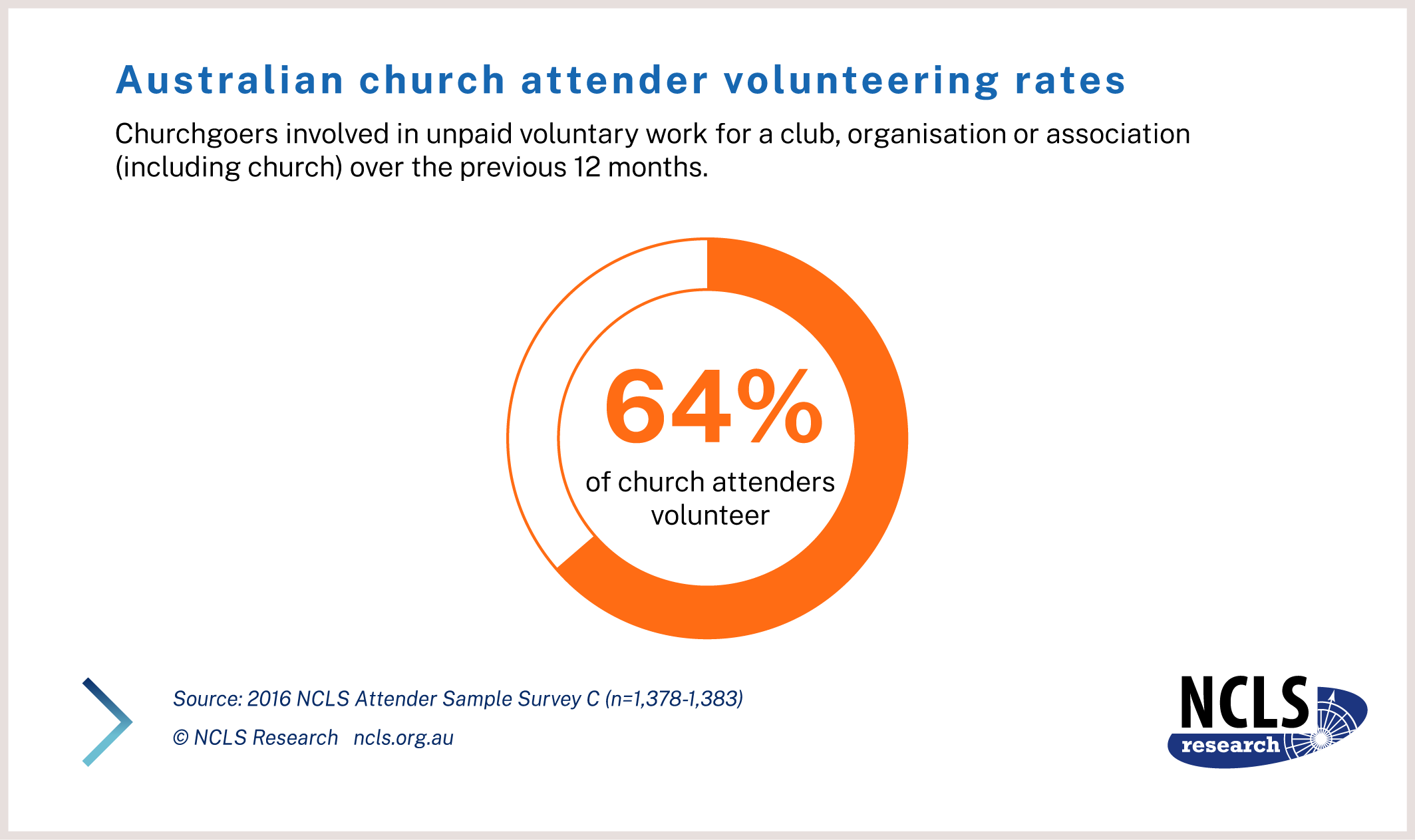
Church attenders are more likely to be volunteers than the wider Australian population. Some 57% of attenders report having spent at least one hour having doing unpaid voluntary work in previous four weeks.** In comparison, in a survey conducted in late 2016 of the Australian population at large, only 30% reported volunteering in the previous 12 months and spending at least an hour doing so in the previous four weeks.***
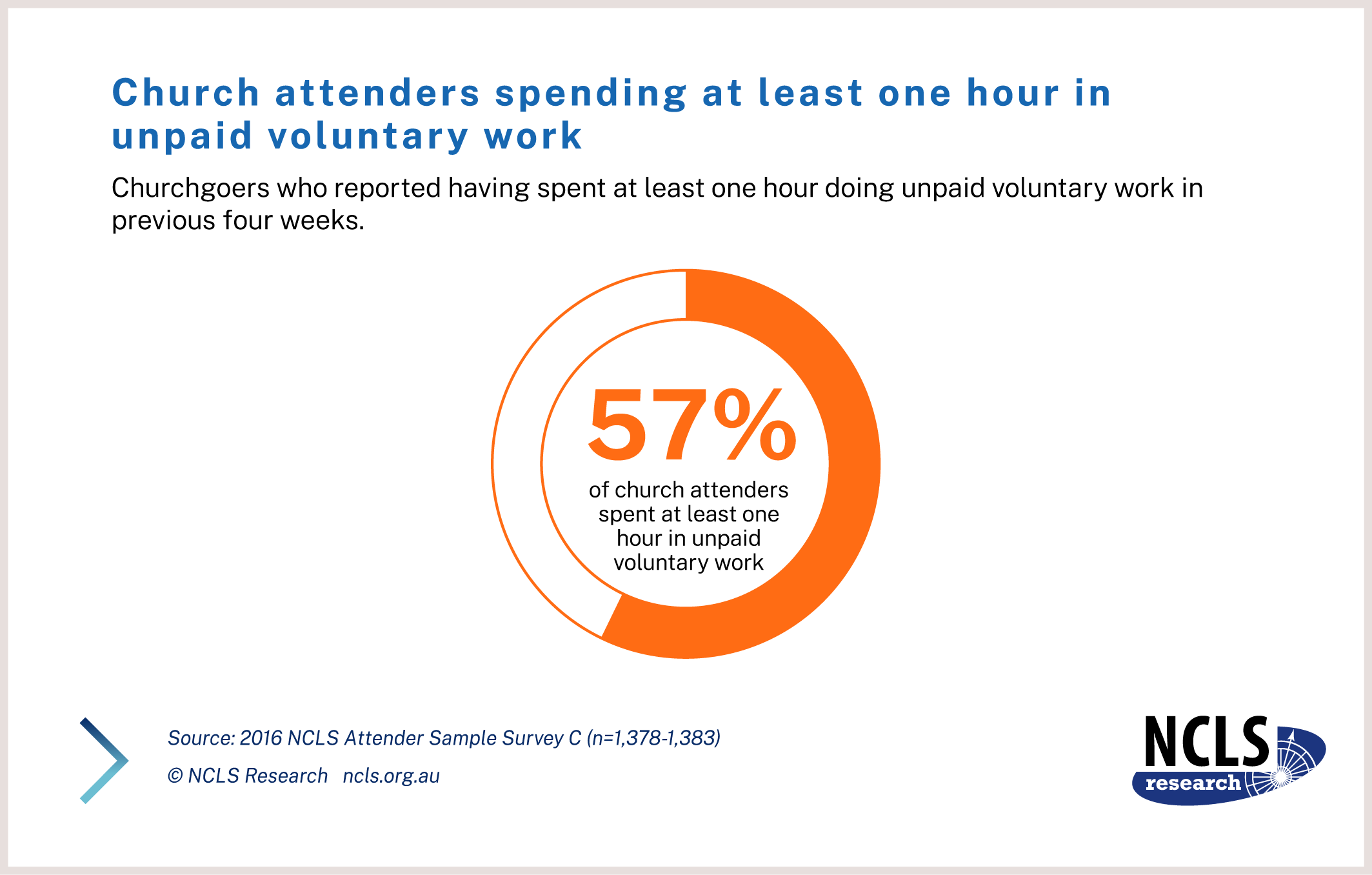
A quarter of churchgoers are active in church-run welfare activities
In terms of church-run activities, results show that 25% of churchgoers are involved in community service, welfare or justice activities run by their church.
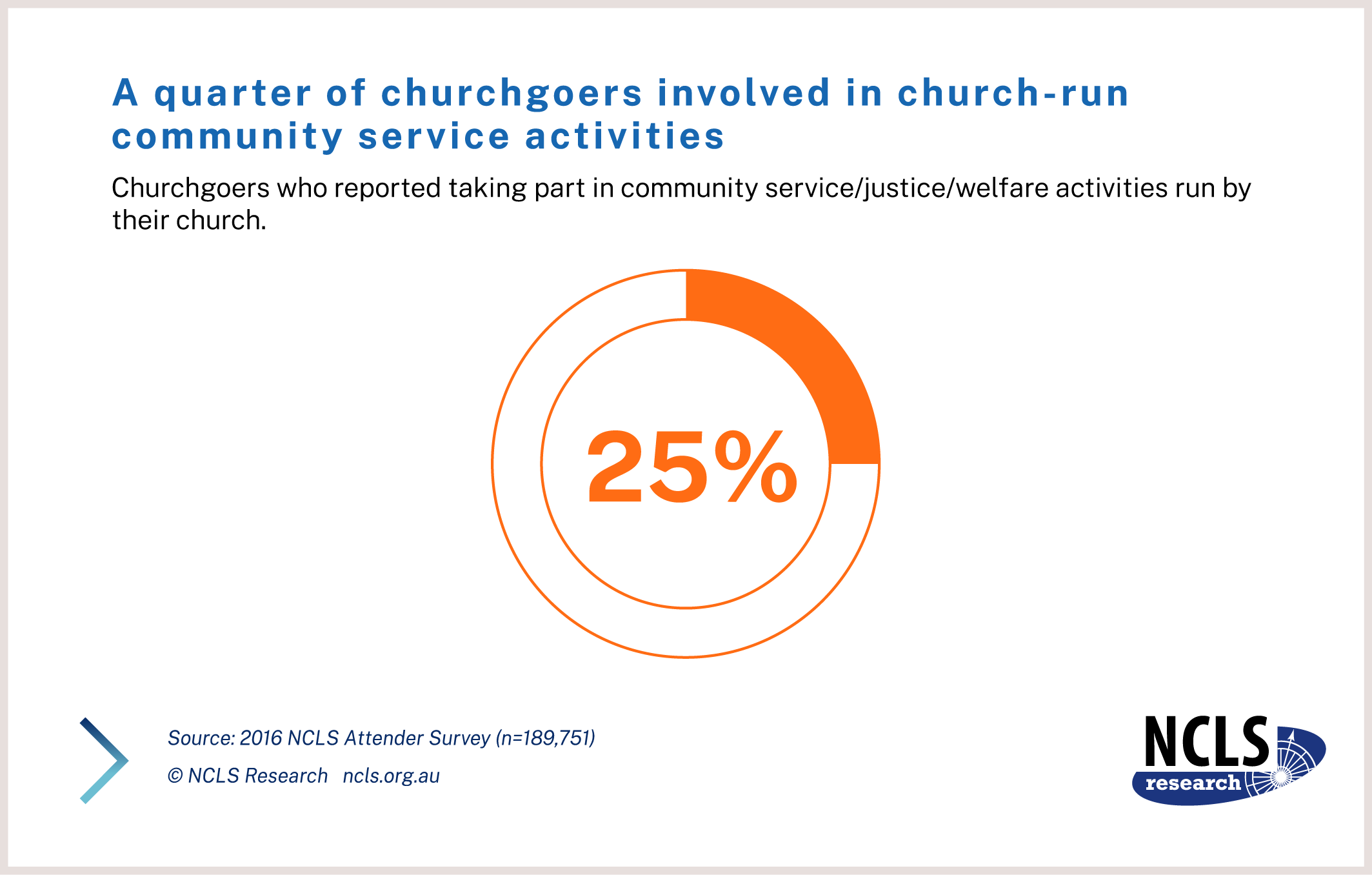
Churchgoers make a strong contribution to the community
Almost half of all churchgoers are involved in community groups not connected to their church, according to the 2016 NCLS results. Churchgoers were most often involved in community service, care and welfare groups (22% of churchgoers); followed by sport and recreation groups (15%); school or youth groups e.g. P&C, Scouts (8%); and social action, justice or lobby groups (6%).
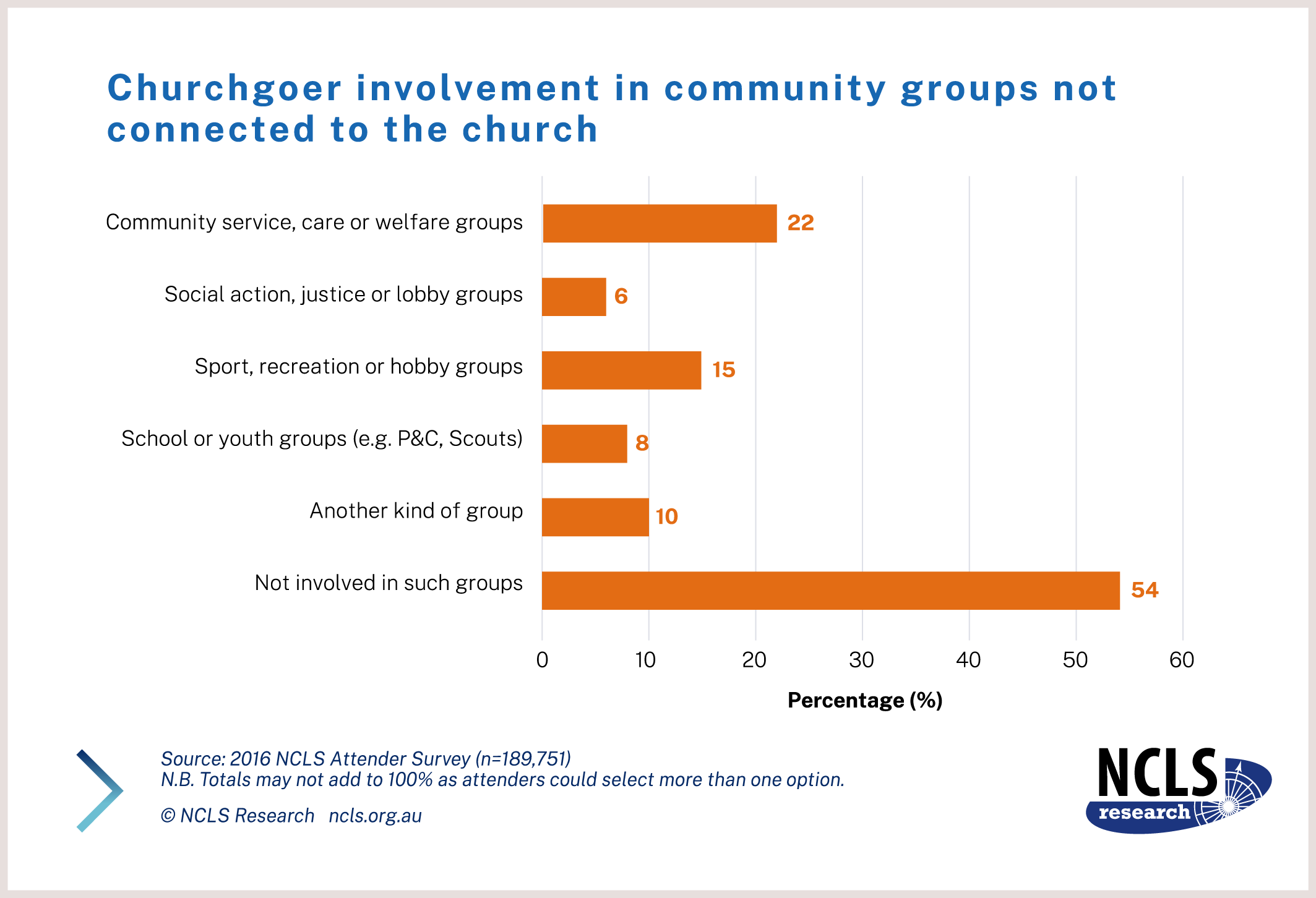
Informal acts of helping of churchgoers
When asked about the ways they help others, an overwhelming majority (96%) of attenders reported having been involved in at least one of seven listed charitable actions over the previous 12 months, in the 2016 NCLS.
Most attenders were more likely to provide financial rather than other forms of assistance, with 76% donating money to charity. Similarly, half of church attenders (51%) had also lent or gave money to others outside their own family and 40% had given possessions to someone in need.
Providing financial assistance would be one of the easiest ways to help someone else, provided the giver has the financial means, as it usually requires little of the giver’s time and effort.
Concern for the sick was evident with half of attenders having visited someone sick in hospital. Caring for someone sick may sometimes require additional skills, but this did not stop a third of attenders having cared for someone very sick over the previous 12 months.
Another way in which many attenders (43%) informally assisted another was by helping them though a personal, non-medical crisis. The cohorts of attenders who were most likely to have assisted someone else in this were attenders of the Pentecostal churches (59%), those in a leadership/ministry role (55%) and those in the 15 to 29-year-old bracket (53%).
Often someone in a personal crisis is not necessarily at a stage of requiring professional counselling and simply needs a friend to talk to. While assisting someone with substance abuse, on the other hand, is something that many do not feel equipped to handle. Some 13% of attenders said they had tried to stop someone from abusing alcohol or drugs, in the previous 12 months. The two groups most likely to assist someone else in this way were, again, attenders of the Pentecostal churches (22%) and those in the 15 to 29-year-old bracket (19%).
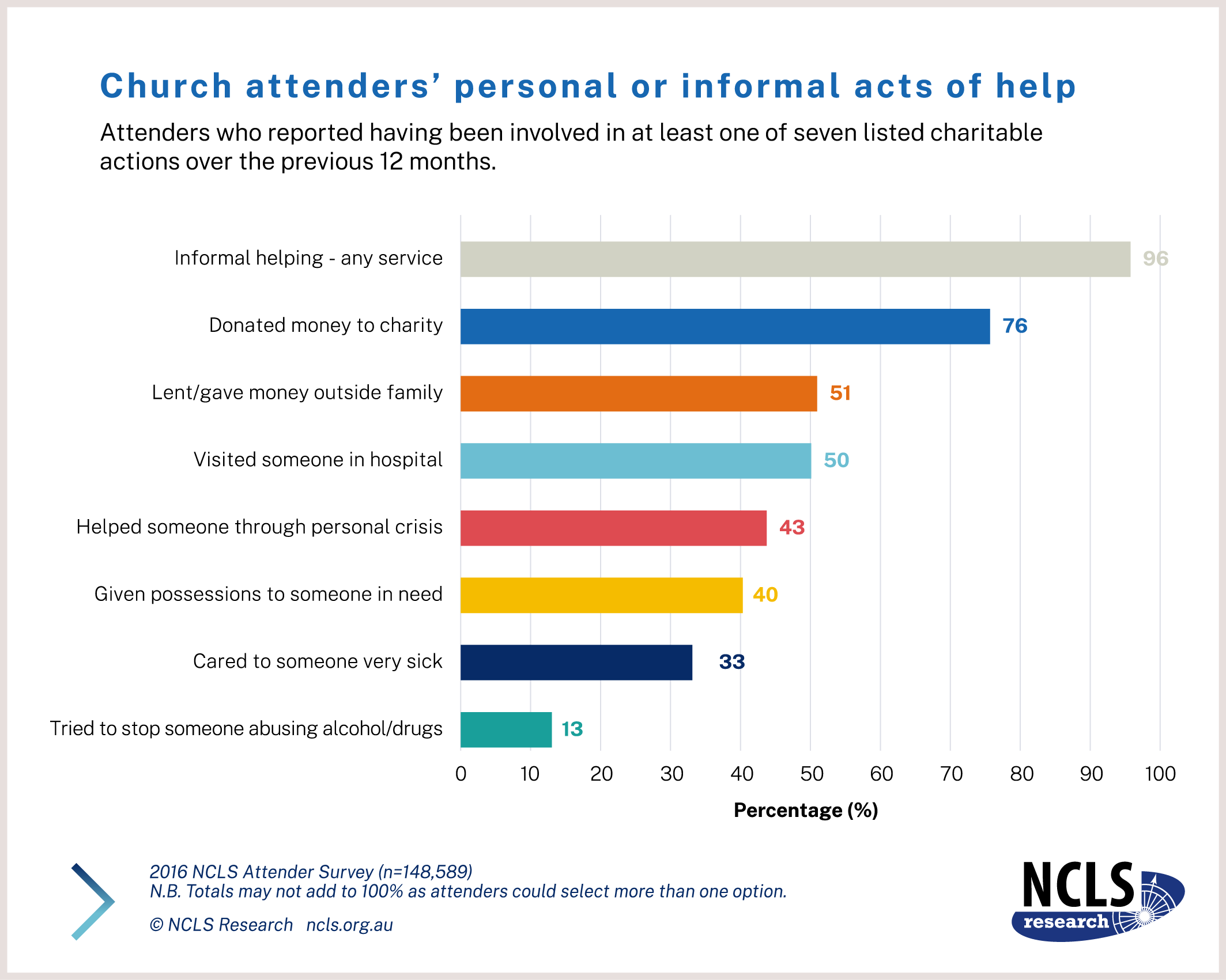
Churchgoers outward focussed and active in service
Rather than being only church-focused, church volunteers are outward-looking and active in their local neighbourhood and community. Many attenders not only take part in the activities organised by their local church, they are also involved in various external community groups.
Related information on service and helping others amongst the wider Australian population is available in our articles: Do Australians still help each other? and Does age affect advocacy and acts of service?
More detailed information on social service and advocacy in churches and churchgoers is available in our report Social Service and Advocacy: Community Engagement by Local Churches.
Data sources:
Gan, C., Pepper, M. & Powell, R. (2018). Social Service and Advocacy: Community Engagement by Local Churches. NCLS Occasional Paper 30. Sydney: NCLS Research.
* Charities Aid Foundation, CAF World Giving Index 2017, Charities Aid Foundation: UK, https://www.cafonline.org/about-us/publications/2017-publications/caf-world-giving-index-2017
** 2016 NCLS Attender Sample Survey C (n=1,378-1,383)
*** Pepper M. and Powell, R., 2016 Australian Community Survey (2016 ACS), 2016, [Computer file]. Sydney: NCLS Research.



